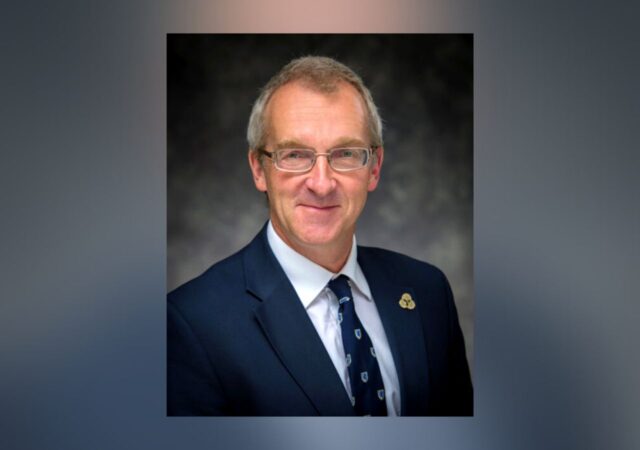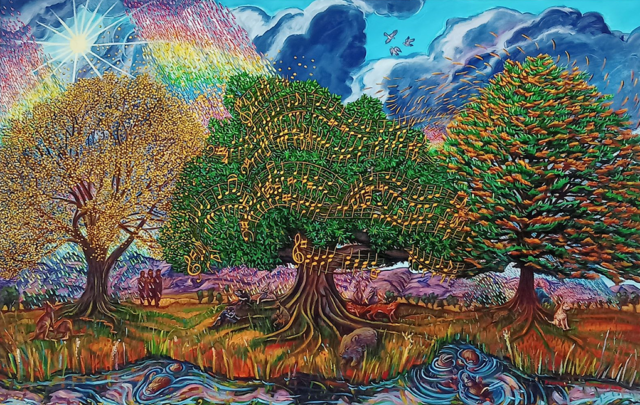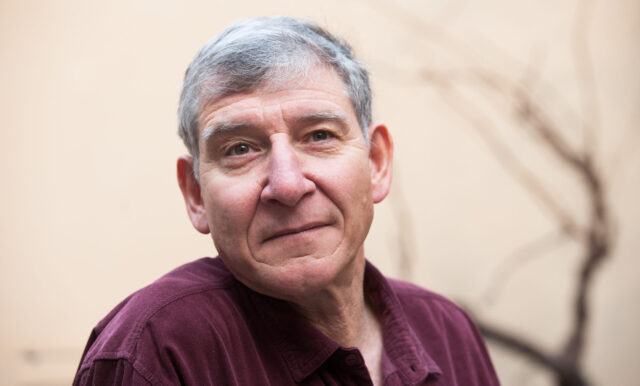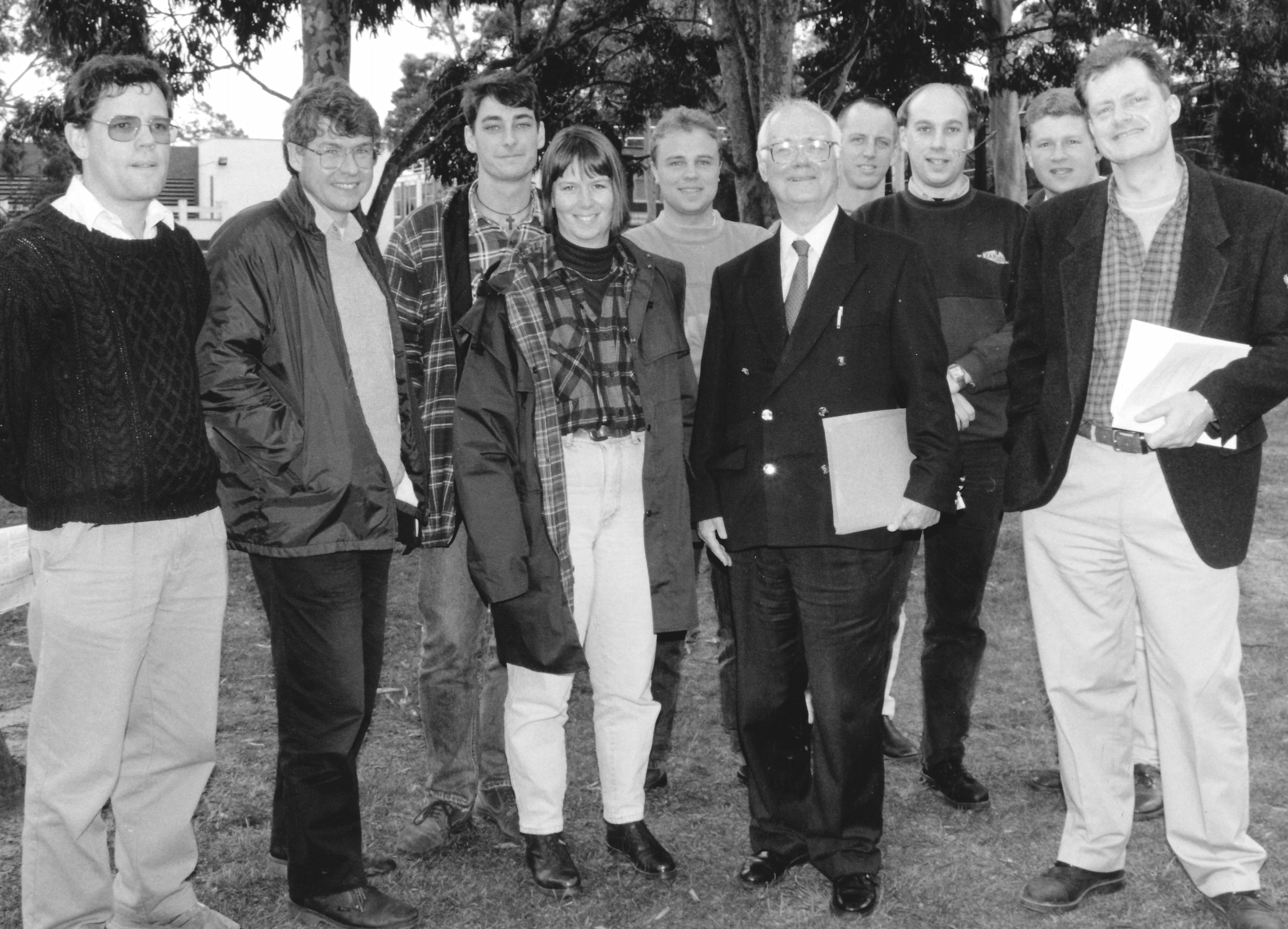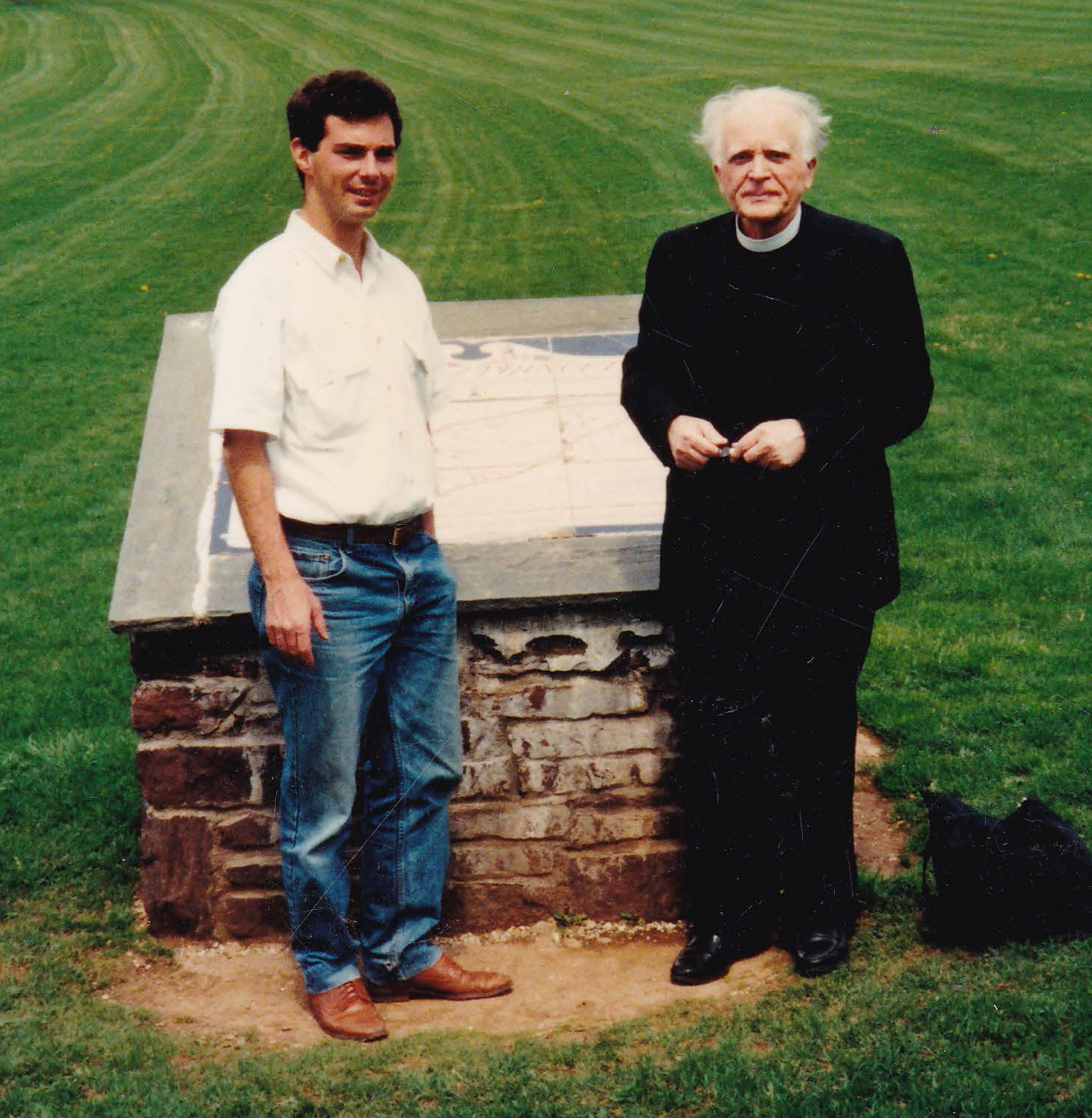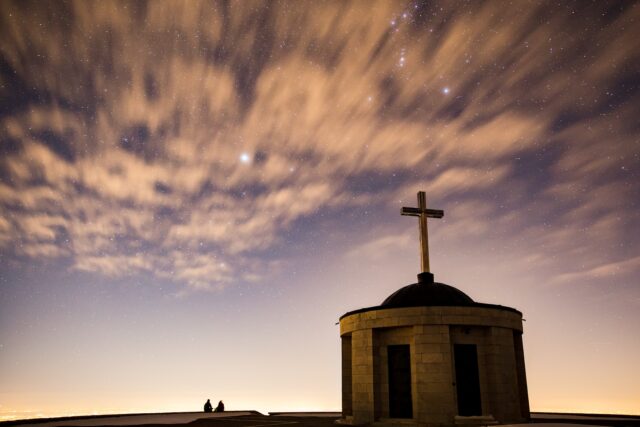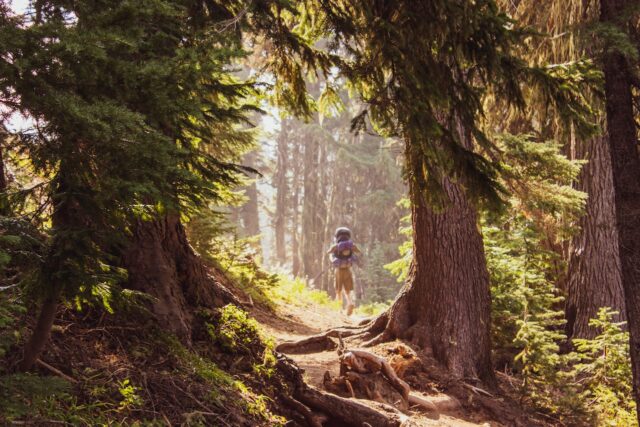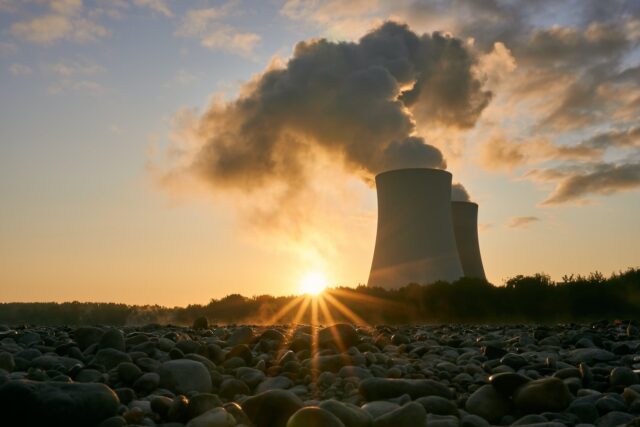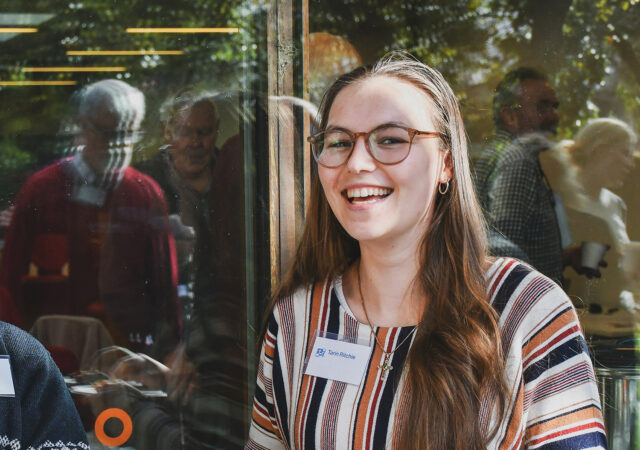


The following is an edited email sent to ISCAST members and friends on January 13, 2020 following the Executive Director’s sojourn and evacuation from Mallacoota during and after the fires.
It is Sunday morning, January 12, 2020. I am sitting at home where things are externally normal: normal traffic, normal bird noises, normal Melbourne blue sky with clouds, although a little smoky.
Internally however, things are not normal: my mind and nerves are still on “Mallacoota action stations” three days after evacuating by Chinook helicopter from the coastal town that was besieged by fire in the early hours of New Year’s Eve. It is now besieged by hundreds of kilometres of closed roads, which, incidentally, separate the Mulherins from their three family cars and other sundry possessions!
(Below: the view through the open “tailgate” of the Chinook over 90-mile beach.)
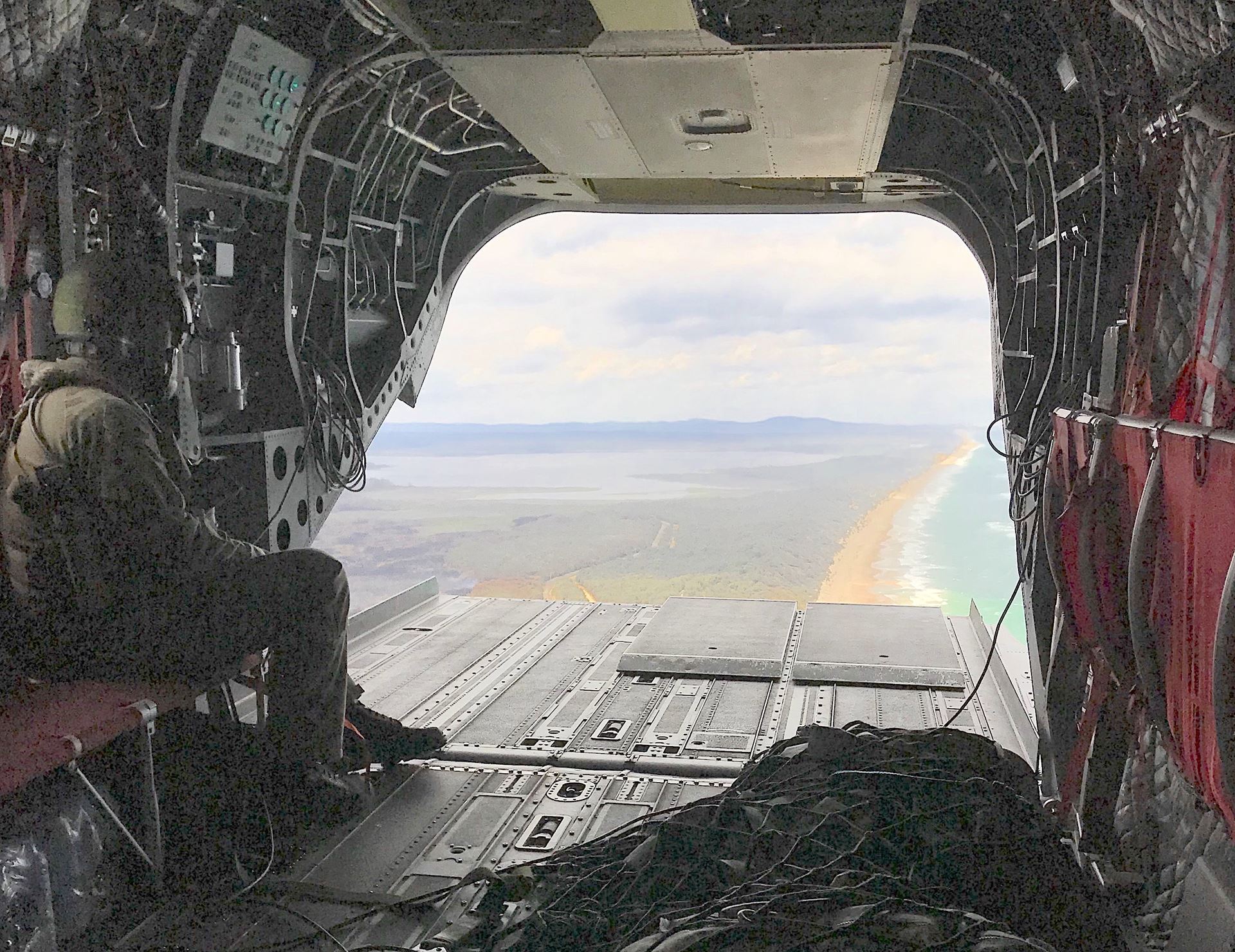
This ISCAST email to our friends and members is an unusual one. It is long, and much of it is not directly “ISCASTian.” However, I write it because I believe that many in the ISCAST community will be interested to read “an account of the things that have transpired amongst us” in the last two weeks. If you are looking for the specifically ISCAST elements of this email, please go to the end where I turn to “ISCAST 2020 and beyond.”
Mallacoota, New Year’s Eve 2019
Sunday two weeks ago (December 29) saw the Scripture Union Theos youth team worshipping at a quiet St Peter’s church in Mallacoota. We had arrived from Melbourne the day before: 17 members of the team ranging from 18 to about 30 years old, plus “team parents” Lindy and myself. St Peter’s is a joint Anglican–Uniting church where pews face large windows overlooking the Mallacoota lakes, sandbars, and past them the open sea. The local minister, who is a keen supporter of the annual SU pilgrimage to Mallacoota, is the Rev. Jude Benton, married to Andy, a fisheries officer.
On the drive to Mallacoota the day before, we had been aware of a fire near Bruthen and regularly checked the Vic Emergency details to see if we might have to detour via Lakes Entrance. Little did we know that a new fire would start the next day at Wingan River, 20 km to the west, and then be blown up the coast to Mallacoota.
The team set up the youth centre and ran a successful first night on the 29th with around 40 young locals and campers spending time in the centre. The following day it became clear that Mallacoota was threatened by the fire with a change expected early in the morning on the 31st, which would push towards us. A community meeting (below) on the oval in front of the Theos centre advised us of plans for what looked like being a challenging next 24 hours. Things were looking ominous.
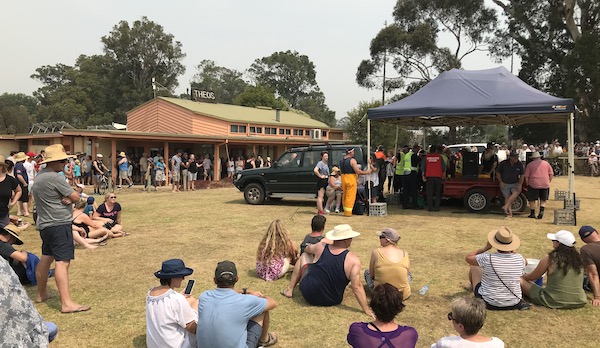
Preparing for the worst
That day, our afternoon team Bible study was interrupted by what appeared to be a false alarm. The Vic Emergency notification advised that the fire was expected to hit Mallacoota about 5pm. Apparently the mistake was the “pm,” as all previous and subsequent notifications predicted that the fire would arrive in the early daylight hours of the 31st.
The evening of the 30th was spent preparing for the morning. There were 15 CFA firetrucks in town and everyone was gearing up for the worst. People with portable gas bottles were advised to move them to the water and CFA instructions were clear: “If you hear sirens, it’s time to move to the emergency refuge.” The team slept in the youth centre rather than tents, and two people were posted on sentry duty ready to wake people. About 8pm on the 30th the power failed. The town would remain without power for days, with supply restored to a small number of buildings on January 3rd; most of the town remains without power as I write.
The fire
Rather than waiting for sirens, the team woke about 5am on the 31st to have an orderly breakfast and move to the refuge. With tea towels acting as smoke masks and a wheelie bin full of wet woollen blankets they crossed the oval to the cinema which, for the next week, would serve as refuge, then emergency accommodation and evacuation centre, as well as the community information point. The cinema was a concrete building with a steel roof, hundreds of metres from the nearest bushland and only 100 metres from the water. Due to the location and proximity of the water, at no stage did I personally feel we were in serious danger, although the experience was physically uncomfortable and emotionally very demanding.
The next 8 hours were spent with 600 or so other refugees, including many extremely well behaved children and dogs, in the hot and very smoky darkness of the cinema (photo below). Four movies (including “Frozen”!) entertained some people. Our team passed the time talking, sleeping, running errands, doing the rounds of the refuge with spray bottles of water to cool people down, and generally remaining calm despite the stressful circumstances. The occasional glimpses outside were surreal; swirling wind, darkness, and glowing orange surrounded us. As well, from within the cinema, we could hear the dull thud of distant gas bottles exploding: a sign that another house had been destroyed.
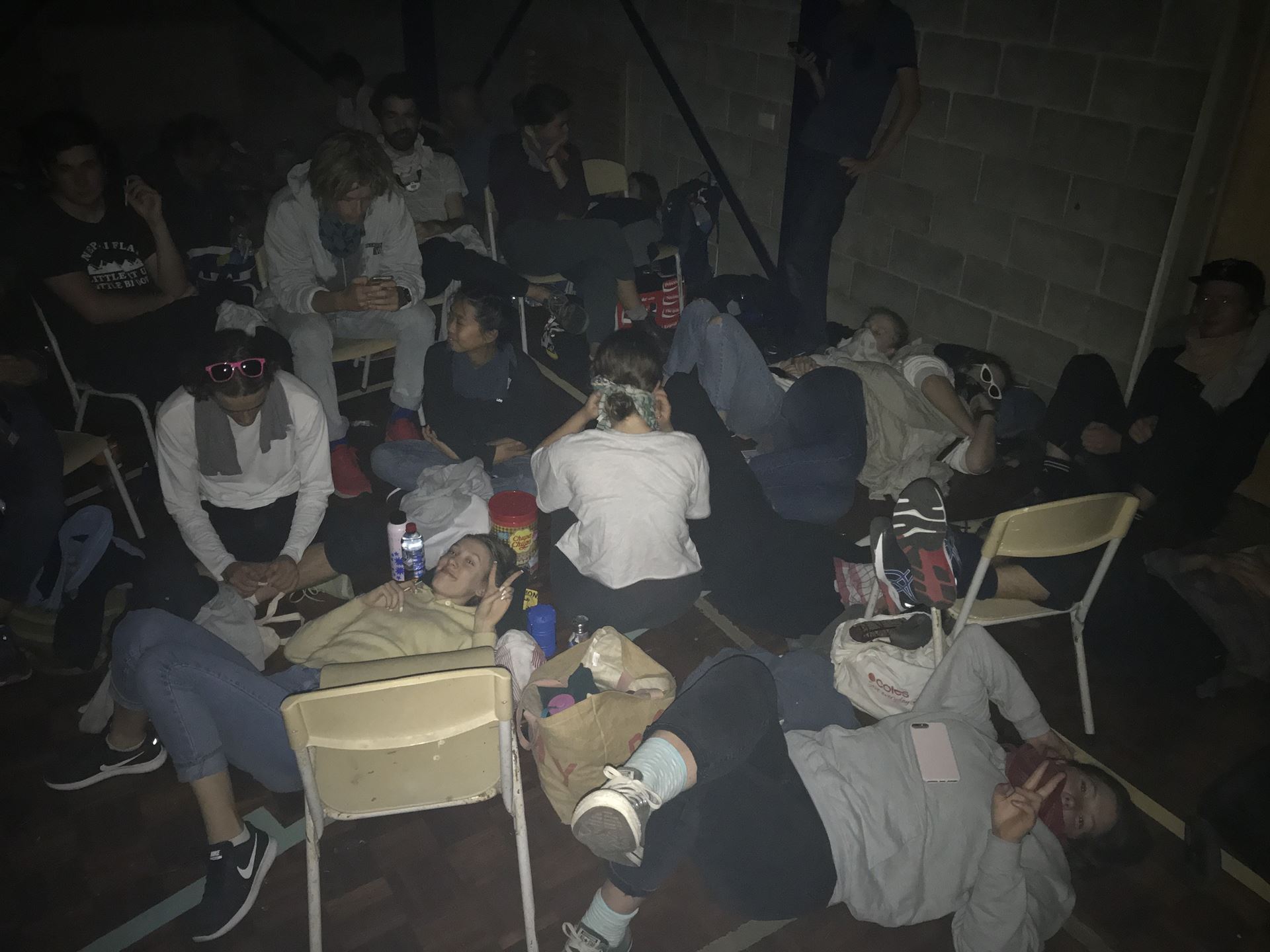
We eventually emerged into the slightly fresher air of a town strewn with blackened leaves and numerous plumes of smoke. Across the water from the pier we could see numerous fires still burning, some in the built-up parts of the town further to the north. We watched as gas bottles exploded and houses were destroyed. I haven’t heard official figures, but my best guess is that around 100 houses were lost in Mallacoota.
Evacuate or remain?
Following the fire it was quickly clear that the roads out of Mallacoota would be closed for weeks. The town is isolated, connected only to the Princes Hwy by one 20-kilometre narrow bitumen road through dense bush. As evacuation plans (by ship or air) were being prepared by the authorities, the team considered their options. Unlike some SU teams, ours were all over 18 years old so a measure of democracy was appropriate in making decisions. All the team were in favour of remaining in Mallacoota as long as we could be useful and not a burden on the local community. While it was clear that our regular activities would be radically changed, the team’s concern for the local youth, some of whom had lost homes, was uppermost in their minds.
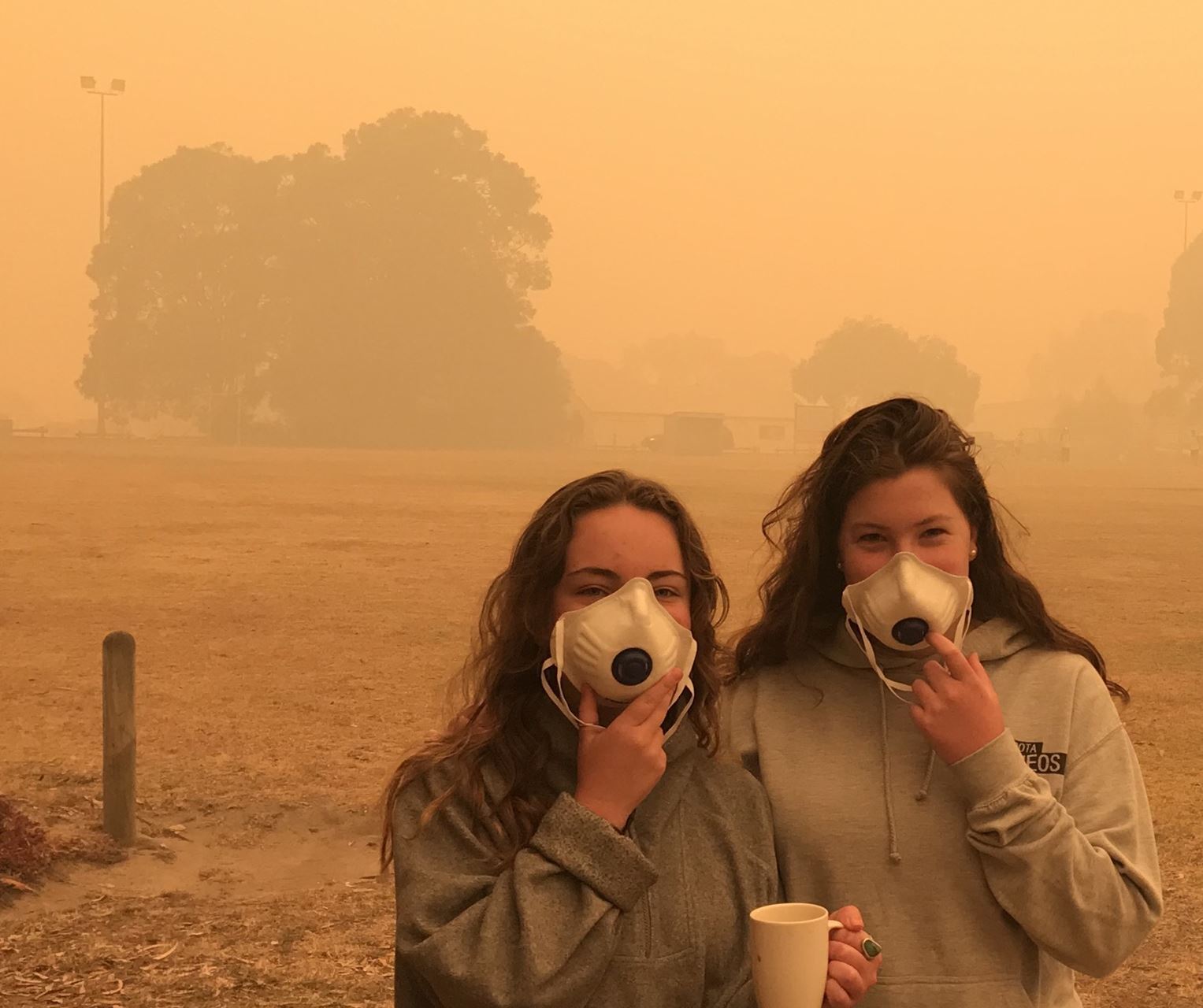
Mallacoota Theos has been running for over 30 years and has an excellent reputation and support from a town known to be particularly difficult for Christian ministry. The Theos ethos (an anagram!) has always been to form long-term relationships with the youth who visit the centre. So, under the circumstances, there was a sense that the team did not want to leave the locals without support. The centre was opened again on the 1st and 2nd of January with no particular program except to give young people a place to talk or to play pool or table tennis or card games. Meanwhile, in conversation with Scripture Union, decisions had to be made: a navy ship, the HMAS Choules was to leave with evacuees on the 3rd.
Premier Daniel Andrew’s announcement of Victoria’s first declared State of Disaster, in the early hours of January 3rd, made the decision for Scripture Union and the team. SU could no longer auspice the mission and the team reluctantly accepted that they needed to pack up and ship out. After a record-breaking pack-up of the centre, the 17 team members were on the last boat transport to the Choules waiting offshore. Along with 1200 others, they enjoyed Navy hospitality and the run of the ship for 20 hours on the voyage to Westernport Bay (thanks to Theos team member Ben Roe for the photo below).
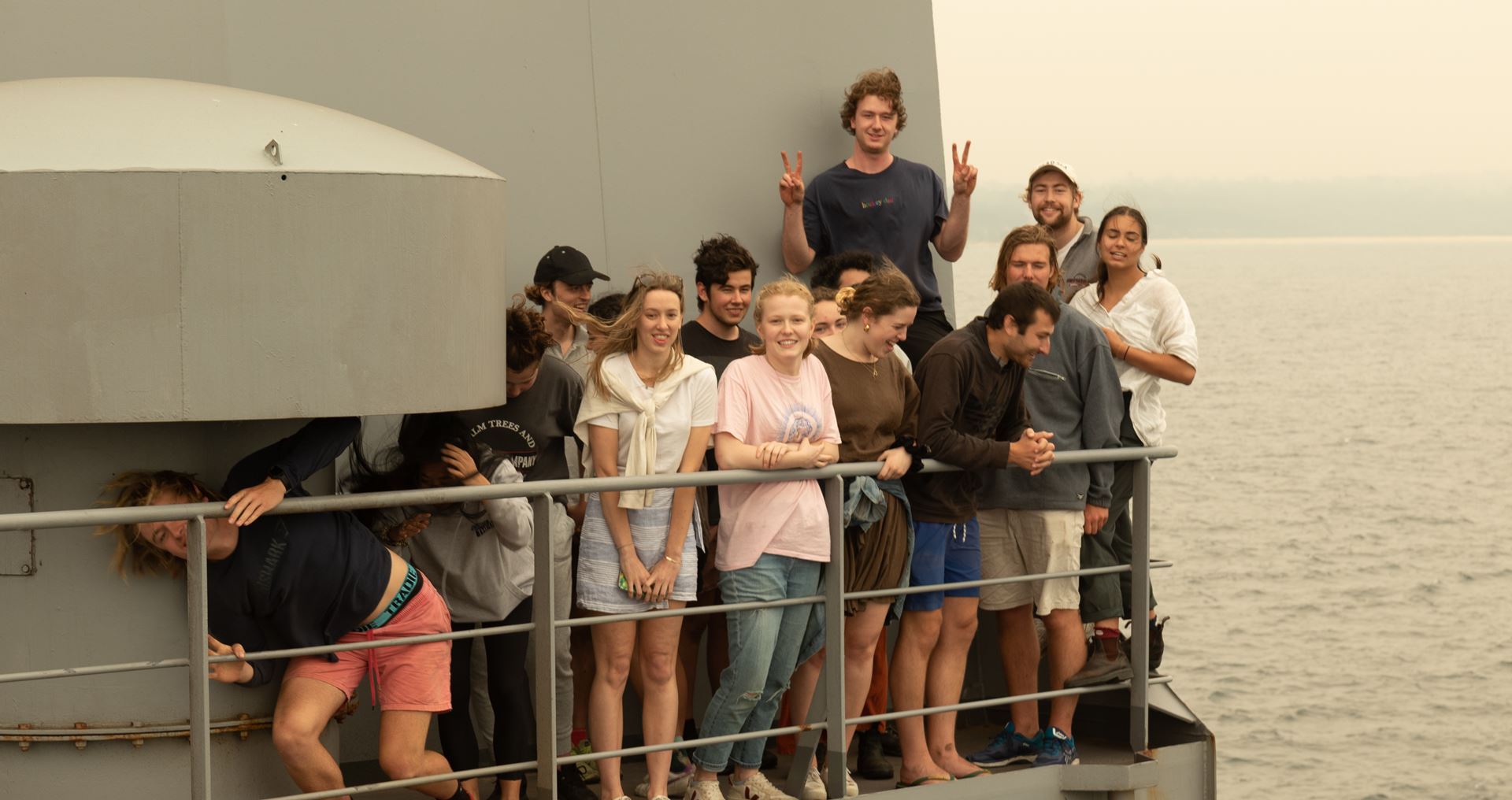
Making ourselves useful and then departing
For Lindy and I, the decision to stay in Mallacoota was a difficult one. Although we were confident the team was fine without us, the last thing we wanted to do was to be in the way in Mallacoota. We were eventually swayed by Rev. Jude’s assurance that we could be useful to her and the church by staying. So began a surreal three days of helping out as we were able: listening to stories, helping in the op shop, helping organise movie times in the church, and changing sleeping locations each night. We didn’t feel we were a lot of help, but we trust it encouraged Jude to have us around for those days.
Sunday, a week after our arrival, saw a very different church service, this time on the point in the caravan park. A mixed group of locals and campers met for a sombre silence-filled service on a smoky orange morning with a navy supply boat offshore (below).
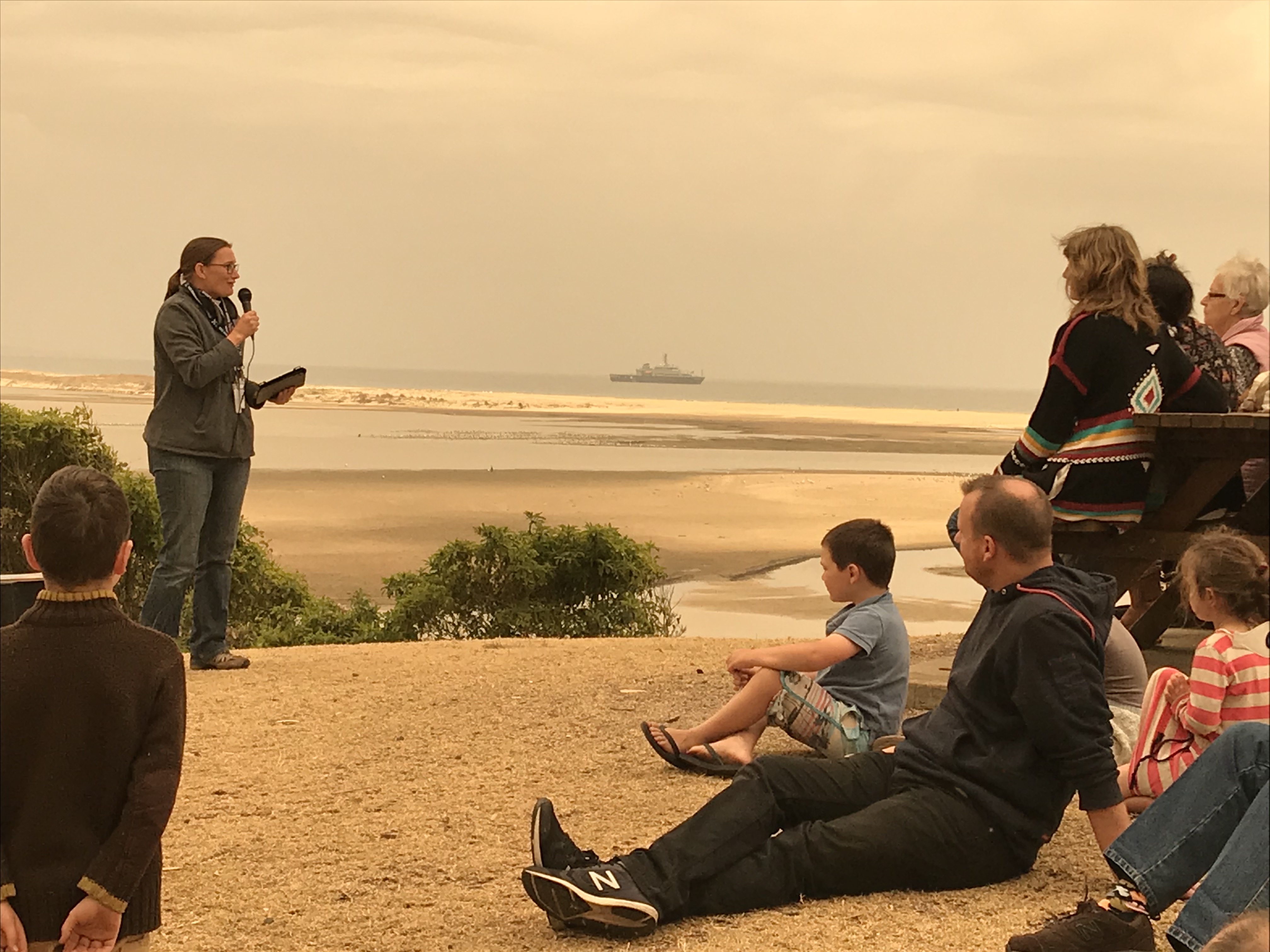
As the predictions of road openings ranged from two weeks to even months, and as our own emotional reserves wained, Lindy and I kept track of the evacuation possibilities so as not to be stranded for weeks. Then, last Thursday, we informed the Air Force personnel that we would be happy to be taken to the RAF base at Sale on a returning supply flight that day or the following day. I also suggested that, all other things being equal, a Chinook helicopter ride would be a bonus! The result: Lindy and I were “Chinooked” out as the only passengers on the 50-minute trip to Sale. (For the really keen, you can see video and photos of the journey here.) The “tailgate” was open enabling a bird’s-eye view of much of the extensive fire damage to East Gippsland.
(Below: Rev. Jude Benton and her husband Andy in their untouched house. The fire destroyed their shed, seen through the window.)
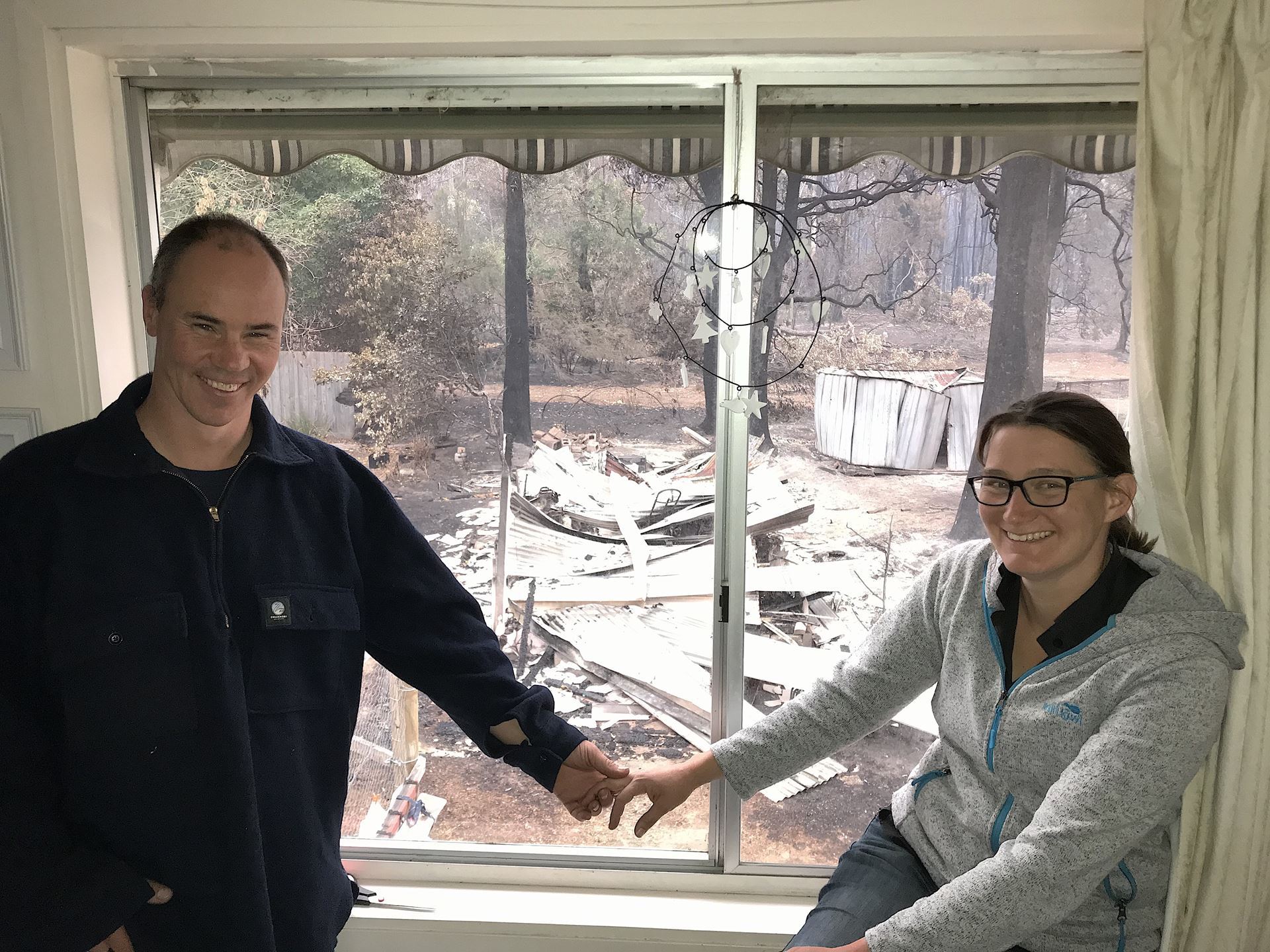
Theological reflections
Without pretending to plumb theological depths, let me share three incidents that have theological dimensions:
1. A day or so after the fire, a woman, “Judy,” who knew we were Christians, and who had imbibed a more-than-healthy dose of alcohol, confronted Lindy and me: “Where is your God in all this? How can your God let this happen?” Here in its rawest is “the problem of evil” that I teach about in philosophy lectures; the apparent conflict between faith in a good and just God, and the tragedies and evils that befall us.
2. Standing behind another local woman, “Jan,” in a shop after the fire, I heard her say “I made lots of promises to God, if only he would save my house. My house was saved; now I hope he doesn’t come to collect.” As she turned around, I smiled and pointed to my “Chaplain” badge and said “I think he has!” End of conversation with a laugh. However, it is worth pondering the seriousness with which we can treat God when we find ourselves in a jam, and then so quickly we turn the other way. It reminds me of a story about 10 people with leprosy.
3. The other “incident” is actually an email conversation I have been having over the last few weeks with certain ISCASTians who know something about forestry. The bushfires highlight the challenges for Christians and others who seek to exercise “responsible dominion” over the creation. I won’t wade into that hot topic now; a Royal Commission will no doubt do that, and so too, in some respects, will our July conference, COSAC 2020. One ISCAST fellow, Michael Clarke, has already been interviewed here in Nature magazine on the topic of the fires and the vast devastation to local fauna.
ISCAST 2020 and beyond
As we start this new year and decade, ISCAST has much to look forward to, as well as a mountain of opportunities to bring to bear the truth of God’s revelation in Jesus Christ in a world where “Judy” and “Jan” have little idea of the profound and life-giving nature of our faith. More than anything, let’s work together to open up the possibility for such people that Christian faith is credible and not simply for what they see as the “loony fringe.”
COSAC 2020 in Melbourne in July is a crucial part of our bringing together theological reflection with the directions that science, technology and human behaviour are leading this century. May I encourage you to be there and to let others know of what will be a very stimulating conference? (Will you submit a proposal to present a short paper?)

The ISCAST board is also working on longer-term plans for staffing, business structure, and funding. We hope soon to hear of a successful application for tax-deductible status for our library and education offerings. Following that, we will be asking members and friends to consider pledging financial support to our new strategic plan.
Meanwhile, it’s business as usual: we continue to receive invitations to speak in schools, in churches, and at training events. (Just this morning I have been invited to speak to a science and religion teachers’ conference in Brisbane.) We are increasingly being contacted by the media for comment on matters of science and religion. And we continue to publish on our website and have more book publishing in the pipeline.
Thank you for your part in this important corner of God’s vineyard. Please pray for wisdom for the board and for me as we go forward in faith. If you have any questions or comments, do let me know. I would love to hear from you.
Kind regards and may this year be one of peace and blessing to you and those around you,
Chris
Rev. Dr Chris Mulherin
ISCAST Executive Director
PS: Coverage of the Theos Mallacoota experience appeared in various places including: Eternity News here and here, ABC online here, in The Age here, and in Christianity Today here.


